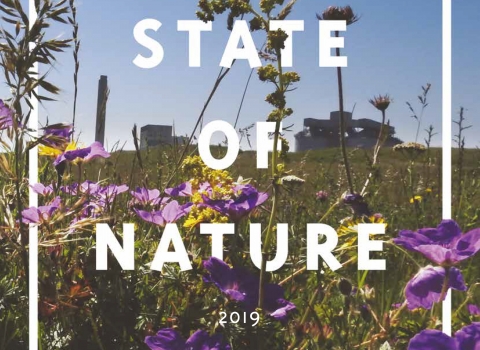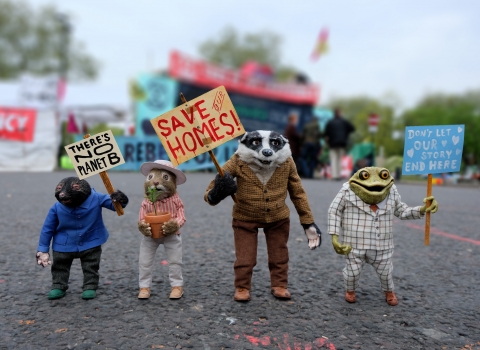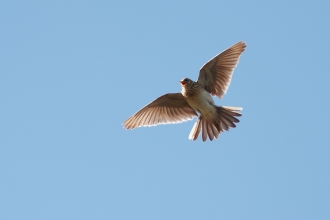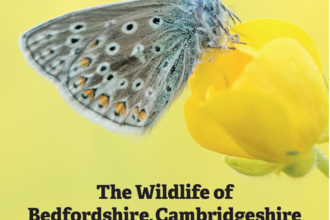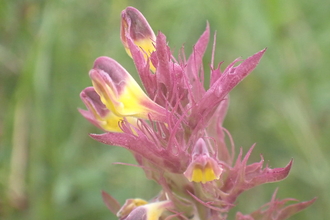The decline continues
The State of Nature report, released today, provides robust and compelling evidence of the continued decline and loss of wildlife over the last fifty years, and the shocking number which are now critically endangered. Although some species are increasing, the habitat specialists are in trouble, and generalist species are expanding, often in response to climate change. The report is not just about rare species: I’m equally concerned about the decline of common species, plants and animals which I saw daily in my childhood - I can now go a whole year without seeing a tree sparrow or a corn marigold unless I make a pilgrimage to particular special sites.
The changes are human-caused: modern farming and pressure of development has transformed our landscape, and climate change threatens species even if their habitat has survived. The State of Nature report confirms that the declined process has continued since 1970. This could be very depressing: hasn’t the growth of the Wildlife Trusts movement and other conservation organisations in the last 60 years made a difference?
Signs of hope?
The national statistics may mask local good news. Some time between 1990 and 2010, something remarkable happened in our three counties: the loss and destruction of habitats was overtaken by the restoration and creation of new habitats. For instance, at the Nene Wetlands, the Trust has linked together 4 existing nature reserves, creating over 650 acres of wildlife habitat; we’ve turned poor arable land to species-rich chalk grassland at Totternhoe, created 30 acres of rich limestone grassland at Ring Haw, started the regeneration and linkage of woodlands at Gamlingay, Waresley, Southwick and Short Woods. And in the Great Fen, we’ve created over 2000 acres of new habitat since 2008. Our friends in RSPB at Ouse Fen and the National Trust at Wicken are now doing similar things. We call it Living Landscapes, and it’s been our focus since 2000.
Defending wildlife: local victories, national attacks
When I joined the staff of the Trust in 1997, we spent a lot of time fighting public inquiries, when planning applications threatened important wildlife habitats. Ten years later, all local councils had signed up to defend the system of Local Wildlife Sites in their local plans. Developers had largely stopped applying for planning permission which would damage or destroy Wildlife Sites, and many were talking with us in advance, to make their developments better for wildlife. We’ve had some great successes: newly created habitats at Cambourne and Trumpington Meadows are far better for wildlife, after the house-building, than the farmland they replaced.
In the last few years, things have changed. The planning system, which has regulated development and allowed local councils to manage local needs and protect the environment, seems to have broken. Many councils no longer have an up-to-date local plan, so they find it hard to turn down inappropriate and damaging development. So-called major infrastructure projects – high speed rail and new motorways – are planned nationally and imposed on councils. The central government target of a million homes between Oxford and Cambridge was invented with no assessment of whether it was environmentally sustainable or whether local people want it. It ignores things as basic as whether there is enough water for the new houses.
So, after 4000 years of declining wildlife habitats, we had managed to turn a corner. We were set to be the first in 100 generations who would leave the country in a better state for wildlife than we found it. And now, government policies threaten to reverse that.
Fighting for a better future
We’re not accepting this quietly: the Wildlife Trust opposes the Oxford-Cambridge expressway, we are campaigning against a southern route for the Ox-Cam rail link (a northern route would avoid irreplaceable ancient woodlands and serve communities who need sustainable transport), and we don’t’ believe a million new homes is achievable: the right number should be reached after assessing the environmental limits on growth. And to tackle climate change, any major development must be both zero carbon and zero water - we must build within environmental capacity.
If we secure a Nature Recovery Network in the next Environment Act, if national and local government signs up to real ‘biodiversity net gain’ from all future developments, and if we move to a zero carbon economy well before 2050, we can get back to wildlife growth and improvement. If not, a future State of Nature report will be even more depressing.


